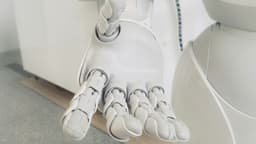Why AI Customer Service is the Future
As society progresses, we often witness the transformative power of technology in various aspects of life. One of the most notable transformations underway is the automation of customer service. Chatbots, powered by advancements in artificial intelligence (AI), are increasingly capable of handling customer service jobs autonomously, heralding a new era of productivity. This shift isn't about rendering human roles obsolete but rather enhancing productivity and reallocating human intellect to more critical tasks—similar to the evolution seen with assembly lines and manufacturing robotics.
The Case for Chatbots in Customer Service
Customer service forms the backbone of consumer satisfaction and business success. However, traditional customer support models often involve human representatives performing repetitive tasks, such as answering frequently asked questions, troubleshooting standard problems, or guiding users through established protocols. These tasks, while important, are time-consuming and can lead to human error and inconsistencies in service quality.
Enter AI chatbots—these programs can simulate human conversation through text or voice interactions. By integrating machine learning and natural language processing, chatbots can understand customer inquiries, respond in real-time, and even learn from previous interactions to improve future responses. This capability addresses several key issues in customer service:
-
24/7 Availability: Unlike human representatives, chatbots can provide round-the-clock service, significantly benefiting global businesses and customers in different time zones without additional labor costs.
-
Consistency and Scalability: Chatbots offer uniform quality in responses, eliminating the risk of human error or emotional variability. Moreover, they can handle thousands of queries simultaneously, something impossible for human representatives, allowing businesses to scale support as needed without compromising quality.
-
Instantaneous Response: In an era that values immediacy, chatbots meet customer expectations of instant responses, enhancing satisfaction, and loyalty.
-
Data Management: Chatbots can track and analyze customer data, providing businesses with insights into common issues, consumer behavior, and potential areas for improvement or investment.
The New Age of Customer Service: Letting Chatbots Take the Lead
As technology keeps getting better, we're starting to see more chatbots in customer service. These aren't just any chatbots; they're getting really good at handling tasks all on their own, without needing a person to step in. This change is good news for businesses and customers, and here's why.
Chatbots Doing It All
First off, chatbots are great at dealing with all the usual questions and problems that come up in customer service. They're quick, they don't need breaks, and they can talk to lots of people at once. Best of all, they're getting so smart that they can solve most issues without any help. This means they can keep customers happy by fixing problems right away, any time of the day or night.
Because chatbots can do all this, human workers don't need to spend their time answering the same questions over and over. Instead, they can focus on other important work that can't be done by chatbots. This could be anything from coming up with new ideas to improve the business, training other staff, or even working on new products or services.
Humans Stepping Aside but Moving Up
With chatbots taking over the routine stuff, people might worry about human workers losing their jobs. But here's the thing: it's not about losing jobs; it's about changing them. With chatbots handling the day-to-day customer service, human workers can move to jobs that need a human touch.
For example, while chatbots are busy with customer questions, human workers can focus on making the business better. They can look at how things are done and come up with smarter ways to do them. They can also spend more time talking to customers about new ideas or products, which is something chatbots can't do.
Also, people are needed to keep an eye on the chatbots. They make sure everything's working smoothly and fix any big problems that come up. Even though chatbots are doing the customer service tasks, human workers are the ones who keep everything running well.
Better Together, but Apart
In the end, chatbots and humans working together - but separately - is a big win for everyone. Chatbots can handle the routine tasks all by themselves, making things faster and easier for customers. Meanwhile, human workers can step aside from customer service but step up in other roles that make the most of their skills.
This new way of doing things doesn't mean humans are no longer needed; it just means they're needed in different, more meaningful ways. With chatbots taking the lead in customer service, businesses can run better, customers can get help faster, and human workers can focus on the big-picture stuff. That's a future everyone can look forward to.
Big Changes Over Time: From Hand-Built to Robot-Built
When we look back, we see how big changes made things better over time, and it helps us understand the cool stuff happening now with AI. A long time ago, when companies started using assembly lines (that's a way of making things where each person does one small part of the job), it was a huge deal. It didn't mean there were no more jobs for people. Instead, jobs changed and became more important in different ways.
Before assembly lines, everyone built an entire product from start to finish. With an assembly line, people worked together, each handling a small piece of the puzzle. This change meant products could be made faster and companies could make a lot more of them. But humans were still super important. They had to make sure everything was working right, fix machines, and check that the products were perfect.
Later on, another big thing happened: robots joined the team. Now, you might think, "Didn't that take away jobs from humans?" Nope, it just changed the game again. Humans had new, fancy jobs like telling robots what to do, designing new products, and making sure everything talked to each other in a language they all understood. With robots, things got even more awesome. They worked like superhumans, doing things really fast and without getting tired or making mistakes, which made everything better and fancier.
So, what's the big picture? Every time these shifts happened, from assembly lines to robots, people didn't go away; they just shifted to cooler, more important jobs. And that's what's happening now with AI in customer service and lots of other areas. It's not about people losing jobs; it's about everything and everyone leveling up!
AI: The New Frontier of Productive Evolution
AI represents the next logical step in this progression. In customer service, AI doesn't negate the necessity for humans; it amplifies human potential. By automating routine tasks, AI frees human minds to tackle more significant challenges, drive innovation, and focus on strategic growth initiatives. Additionally, as AI technology improves with continued learning and adaptation, it only expands the potential for human roles in oversight, creative problem-solving, and decision-making based on insights derived from AI data analysis.
The evolution towards fully automated customer support through AI is not a displacement of the human workforce but an elevation. As with the assembly lines and robotics in manufacturing, AI in customer service redefines roles and liberates human intellect for tasks that machines cannot perform. Society moves forward not by replacing humans with technology but by leveraging technology to enhance human productivity and creativity. Embracing AI-driven customer support is not just a leap into the future; it's a step towards a more innovative, efficient, and human-centric world.












